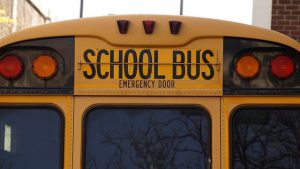By Elliott Brack, editor and publisher, GwinnettForum | Vehicles passing stopped school buses is much more of a problem than most of us realize. At least Gwinnett’s school system is taking steps to address this situation, at no cost to your school tax bill. But only about 10 school systems in Georgia are participating in a new technology which improves school bus safety.
 Gwinnett is partnering with Redflex Traffic Systems of Phoenix, Ariz. in having traffic cameras on its buses. Redflex is a wholly-owned subsidiary of an Australian company, which operates the world’s largest network of digital speed and red-light cameras worldwide. Redflex partners with over 200 communities in the U.S. and Canada in traffic safety programs.
Gwinnett is partnering with Redflex Traffic Systems of Phoenix, Ariz. in having traffic cameras on its buses. Redflex is a wholly-owned subsidiary of an Australian company, which operates the world’s largest network of digital speed and red-light cameras worldwide. Redflex partners with over 200 communities in the U.S. and Canada in traffic safety programs.
The recommended fine locally for passing a stopped school bus is $300. From this, the schools get 25 percent, as does the county, with 50 percent going to Redflex. There is no upfront cost for Gwinnett, as all costs are born by Redflex, while the paying for the program is 100 percent violator funded. Redflex provides a turn-key program, including training and installing all hardware, maintaining the system, payment progressing and collection.
 Since the school bus cameras were installed, Gwinnett County’s School Board has received $1.4 million in fine money since January, 2015, as has Gwinnett County government. The School Board is using part of that money to make purchase of new buses (each cost on average $85,000), relieving the school’s budget of that funding.
Since the school bus cameras were installed, Gwinnett County’s School Board has received $1.4 million in fine money since January, 2015, as has Gwinnett County government. The School Board is using part of that money to make purchase of new buses (each cost on average $85,000), relieving the school’s budget of that funding.
Illegally passing stopped school buses is a major problem in this country. A 2012 study conducted by the National Association of State Directors of Pupil Transportation Services found that 88,000 vehicles illegally pass 100,000 school buses every day. That’s 16 million illegal passings in a typical 180 day school year.
That figure is similar in Gwinnett County. The schools have only installed the cameras on 300 buses (of its total 1,650 buses running any day). Cameras are on buses in each school cluster.
Once a year the School Board asks its drivers to report how many vehicles passed their stopped bus that day. It hit 3,000 on the one-day count. Yet Gwinnett issues only an average of 100 citations for passing stopped buses each day, meaning that about 2,900 vehicles are not being cited each day. So the problem is much worse than at first glance.
Danny Jardine, the school’s chief operating officer, who oversees the school bus fleet, says that drivers simply pay no attention to the rules of the road concerning school buses. “Everyone should know what the law is when they see the stopped bus,with its lights flashing. When that stop arm comes out, people simply do not pay it any attention. We have videos of as many as six and seven cars at one time passing a stopped school bus. It scares me. And we see this not just on Buford Highway or U.S. 29. We see it even in sub-divisions!”
The law is simple. You do not pass a stopped school bus on a two-lane highway. Traffic in both directions must stop. However, on a divided highway, traffic in the opposite lane does not have to stop. (But many drivers do not understand this either, backing up traffic on divided highways when it is not necessary.)
Danny Jardine adds: “Our job is to make sure that the school children get on and off the bus safely. Installing these bus cameras isn’t about the money we get from the fines. It’s simply about getting our students safely on and off the buses.”









Follow Us